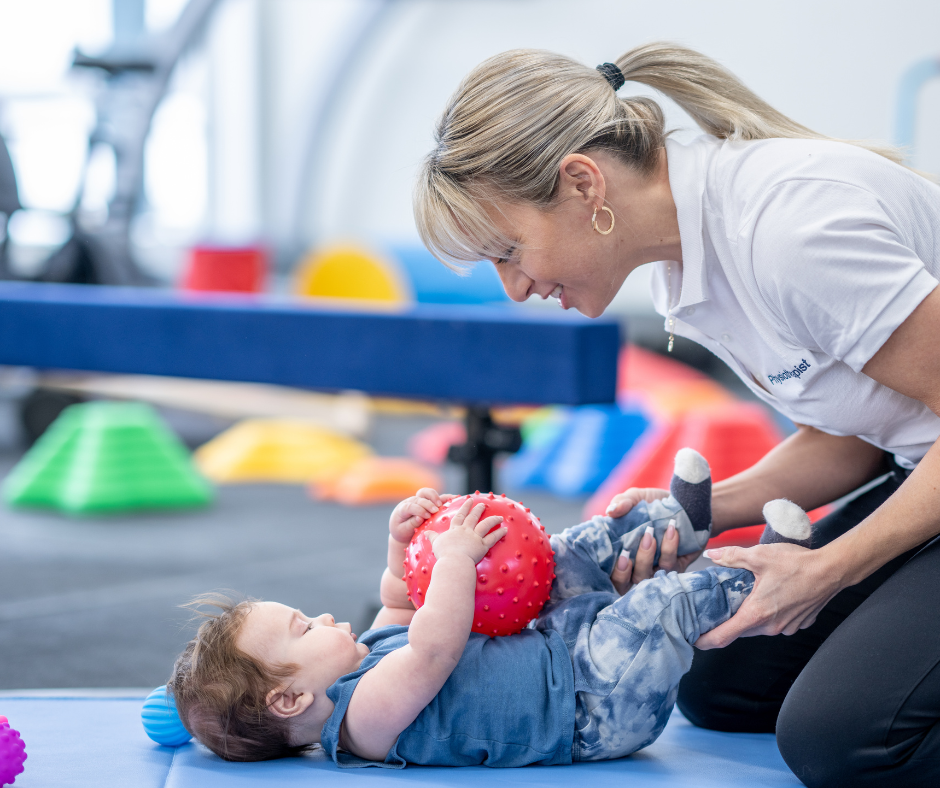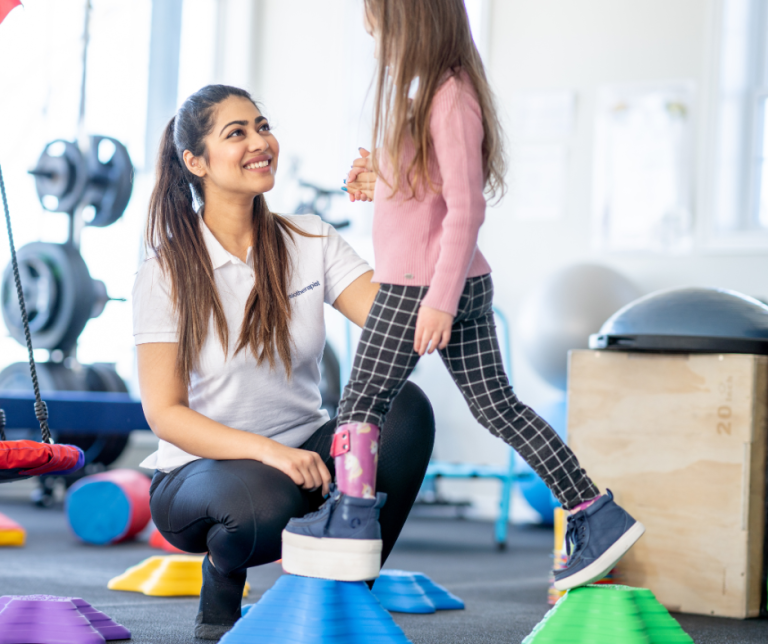Imagine a world where simple movements—running, jumping, or even reaching for a favorite toy—can feel like solving a puzzle without all the pieces in place. For children with Autism Spectrum Disorder (ASD), navigating these physical challenges can sometimes feel this way. But with the right interventon and support, these children can begin to develop skills that will help them connect more fully with the world around them.
One of the key methods in fostering these abilities is Physical Therapy, a specialized form of care that supports children in overcoming physical challenges, promoting greater independence and participation in their daily lives.
In this post, we’ll dive into how Physical Therapy offers meaningful benefits for children with ASD, helping them develop skills that lead to greater independence and improved well-being.
Autism Spectrum Disorder

Autism Spectrum Disorder (ASD) is characterized by challenges in social interaction, repetitive behaviors, and difficulties in motor skills. According to the Centers for Disease Control and Prevention (CDC), about 1 in 54 children are diagnosed with ASD, emphasizing the importance of therapeutic interventions. The characteristics of Autism Spectrum Disorder (ASD) can differ greatly from person to person. The term “spectrum” reflects this wide range, as individuals may experience symptoms that are mild, moderate, or severe. Some individuals have less pronounced symptoms, placing them on one end of the spectrum, while others may show more intense symptoms, placing them on the opposite end.
Another area often affected is physical development. The sensory and motor connection plays a significant role in how children with ASD engage with their environment:
- Children with ASD often experience heightened or dulled sensory perceptions, impacting their responses to stimuli.
- Motor skills, both fine (e.g., writing) and gross (e.g., running), may develop atypically, leading to difficulties in performing everyday tasks.
- Poor muscle tone and coordination can make activities like running or playing more challenging
- Difficulty with posture and balance affects stability in both everyday tasks and playtime.
Addressing these physical challenges is crucial, and Physical Therapy (PT) can offer support through targeted interventions designed to improve motor coordination, sensory integration, and overall physical functioning.
How can Physical Therapy help?

Physical therapy for children with Autism Spectrum Disorder focuses on enhancing their physical capabilities, fostering better motor control, and improving overall quality of life. In pediatrics, physical therapists incorporate these exercises into play to make them fun and age-appropriate, helping children stay engaged and motivated throughout their therapy sessions.
1. Motor Development Activities

Motor development interventions focus on refining both gross and fine motor skills, essential for everyday actions like playing, writing, or participating in sports.
- Obstacle courses: Structured activities involving climbing, balancing, or stepping help develop gross motor control.
- Ball Games: Activities such as rolling, kicking, and tossing balls to refine gross motor skills.
- Jumping/Skipping/Hopping Activities: Use of trampolines or jumping mats for activities like jumping jacks, hopscotch, or simple jumping games to enhance coordination, leg strength, and overall motor skills.
- Climbing Activities: Use of climbing structures or jungle gyms to promote gross motor skills. Climbing helps strengthen arms and legs and boosts confidence.
2. Strength and Endurance Building

These exercises focus on strengthening muscles and building stamina to support physical confidence, body awareness, and sensory regulation. Fun activities help engage children and encourage participation.
- Aerobic Activities: Sensory-friendly, rhythmic activities like dancing to familiar songs, jumping on a mini-trampoline, or skipping. Swimming is particularly beneficial for children with autism, as water provides calming sensory input while improving cardiovascular endurance.
- Functional Resistance Exercises: Activities that incorporate resistance bands, medicine balls, or light dumbbells safely strengthen core and limb muscles.
- Obstacle Courses with Climbing and Crawling: Courses that involve climbing over padded structures, crawling through tunnels, or stepping over hurdles build strength and endurance through dynamic movement.
3. Sensory Integration

Physical Therapists also utilize sensory-rich activities to enhance engagement and support the development of motor skills.
- Balance and Core Stability Activities: Using equipment like balance boards, therapy balls, or standing on foam surfaces, these activities engage core muscles and improve stability and body awareness.
- Weighted Carrying and Pushing Exercises: Carrying a weighted backpack, pushing therapy sleds, or rolling weighted medicine balls across the floor help strengthen major muscle groups and increase spatial awareness.
- Therapy Ball Activities: Sitting on or lying over a therapy ball while performing balance exercises strengthens core muscles and enhances proprioception.
- Obstacle Courses with Weighted Equipment: Structured courses involving stepping over hurdles or crawling through tunnels with a weighted vest improve coordination and provide proprioceptive input to develop motor skills.
Enhancing Social Skills and Communication

Many Physical Therapy activities involve interactions with therapists, peers, or family members, offering opportunities to practice social skills and communicate more expressively. Group exercises or shared tasks in PT can enhance skills like turn-taking, patience, and even reading non-verbal cues.
Improving Emotional Well-being

Physical therapy sessions also provide children with a structured, positive outlet for releasing excess energy or managing frustration. This can be especially beneficial for emotional regulation, helping to reduce feelings of anxiety and irritability, while fostering an overall sense of calm and well-being.
Exercise Supports a Healthy Gut Microbiome

Regular physical activity during therapy helps promote a healthier gut, which studies show can reduce inflammation. This not only improves the child’s overall well-being but may also support better emotional regulation.
Key Insight:
“Building physical strength doesn’t just change the body; it transforms a child’s ability to engage with the world.”
Physical therapy offers numerous benefits for children facing challenges in movement and motor skills, particularly those with Autism Spectrum Disorder (ASD). PT enhances coordination, balance, and overall physical abilities, helping children gain confidence and independence. Through fun, engaging and individualized interventions, Physical Therapy supports children in overcoming barriers to daily activities, allowing them to participate more fully in their everyday lives and fostering a sense of accomplishment and well-being.
